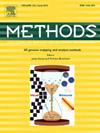Ab-Amy 2.0: Predicting light chain amyloidogenic risk of therapeutic antibodies based on antibody language model
IF 4.2
3区 生物学
Q1 BIOCHEMICAL RESEARCH METHODS
引用次数: 0
Abstract
Therapeutic antibodies have emerged as a promising treatment option for a wide range of diseases. However, the light chain of antibodies can potentially induce amyloidosis, a condition characterized by protein misfolding and aggregation, posing a significant safety concern. Therefore, it is crucial to assess the amyloidogenic risk of therapeutic antibodies during the early stages of drug development. In this study, we introduce AB-Amy 2.0, a new computational model with enhanced performance for assessing the light chain amyloidogenic risk of therapeutic antibodies. By employing pretrained protein language models (PLMs) embeddings, AB-Amy 2.0 achieves higher accuracy in amyloidogenic risk prediction compared with traditional features offering a crucial tool for early-stage identification of antibodies with low aggregation propensity. The AB-Amy 2.0 was trained on antiBERTy embeddings and utilizes the SVM algorithm, resulting in superior performance metrics. On an independent test dataset, the model achieved high sensitivity, specificity, ACC, MCC and AUC of 93.47%, 89.23%, 91.92%, 0.8261 and 0.9739, respectively. These results highlight the effectiveness and robustness of AB-Amy 2.0 in predicting light chain amyloidogenic risk accurately. To facilitate user-friendly access, we have developed an online web server (http://i.uestc.edu.cn/AB-Amy2) and a command line tool (https://github.com/zzyywww/ABAmy2). These resources enable the broader application of this advanced model and promise to enhance the development of safer therapeutic antibodies.
Ab-amy 2.0:基于抗体语言模型预测治疗性抗体的轻链淀粉样蛋白致病风险。
治疗性抗体已成为治疗多种疾病的理想选择。然而,抗体的轻链有可能诱发淀粉样变性(一种以蛋白质错误折叠和聚集为特征的疾病),从而带来重大的安全隐患。因此,在药物开发的早期阶段评估治疗性抗体的淀粉样变性风险至关重要。在这项研究中,我们介绍了 AB-Amy 2.0,这是一种性能更强的新型计算模型,用于评估治疗性抗体的轻链淀粉样蛋白致病风险。通过使用预训练的蛋白质语言模型(PLMs)嵌入,与传统特征相比,AB-Amy 2.0 在淀粉样蛋白生成风险预测方面实现了更高的准确性,为早期识别低聚集倾向的抗体提供了重要工具。AB-Amy 2.0 采用 SVM 算法,以 antiBERTy 嵌入为基础进行训练,因此性能指标更优越。在独立测试数据集上,该模型的灵敏度、特异性、ACC、MCC 和 AUC 分别达到了 93.47%、89.23%、91.92%、0.8261 和 0.9739 的高水平。这些结果凸显了 AB-Amy 2.0 在准确预测轻链淀粉样变性风险方面的有效性和稳健性。为了方便用户访问,我们开发了一个在线网络服务器(http://i.uestc.edu.cn/AB-Amy2)和一个命令行工具(https://github.com/zzyywww/ABAmy2)。这些资源使这一先进模型得到了更广泛的应用,并有望促进更安全的治疗性抗体的开发。
本文章由计算机程序翻译,如有差异,请以英文原文为准。
求助全文
约1分钟内获得全文
求助全文
来源期刊

Methods
生物-生化研究方法
CiteScore
9.80
自引率
2.10%
发文量
222
审稿时长
11.3 weeks
期刊介绍:
Methods focuses on rapidly developing techniques in the experimental biological and medical sciences.
Each topical issue, organized by a guest editor who is an expert in the area covered, consists solely of invited quality articles by specialist authors, many of them reviews. Issues are devoted to specific technical approaches with emphasis on clear detailed descriptions of protocols that allow them to be reproduced easily. The background information provided enables researchers to understand the principles underlying the methods; other helpful sections include comparisons of alternative methods giving the advantages and disadvantages of particular methods, guidance on avoiding potential pitfalls, and suggestions for troubleshooting.
 求助内容:
求助内容: 应助结果提醒方式:
应助结果提醒方式:


